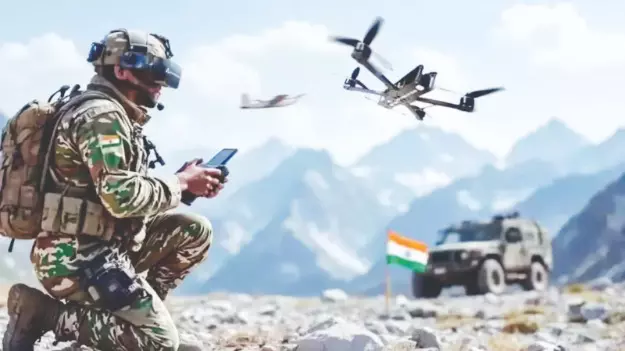Army’s drone platoons take flight

New Delhi: Reimagining the future of ground combat, the Indian Army is ready to induct ASHNI drone platoons in all 450 infantry battalions, scouts, and special forces units — a decisively technology-led leap towards combat preparedness, according to sources.
The decision, accompanied by the raising of the Bhairav battalions, reflects the Army’s shift towards multi-domain warfare fuelled by sophisticated Intelligence, Surveillance, and Reconnaissance (ISR) capabilities and sweeping organisational reforms aimed at aligning tactical operations with long-term strategic goals.
The ASHNI platoons, named from the Sanskrit term for “fire”, mark a paradigm shift in the integration of unmanned aerial vehicles into the infantry. They will consist of First-Person View (FPV) drones for both surveillance and precision strike missions, so drones become as much a part of the battlefield as they are with conventional weapons. Nine types of indigenous drones are being tested, ranging from ISR platforms to loiter munitions, and it reflects the Army’s keen emphasis on indigenous defence innovation.
Parallel to that drive is the formation of Bhairav Battalions, small and nimble multi-domain battalions that fill the gap between conventional infantry and special forces.
With a lean strength of approximately 250 men, these battalions include artillery, air defence, and signals specialists to deliver rapid tactical assaults with lightweight and disposable weapon systems. In contrast to the previous Ghatak platoons, Bhairav units are technologically linked, bigger, and meant for quick deployment — a measure of the Army’s shifting conception of agile warfare adapted to contemporary combat environments.
Establishment of ASHNI platoons and Bhairav Battalions is a part of the Army’s broader modernisation programme for infantry based on six major areas — lethality, mobility, communications, battlefield awareness, survivability, and training.
In firepower improvements, the Army has moved from 5.56 mm INSAS rifles to 7.62 mm rifles and has inducted the AK-203 assault systems.
New-generation .338 calibre sniper rifles, anti-tank systems, rocket launchers, and loiter munitions have also been added to enhance precision and strike power, especially when combined with drone support.
In terms of mobility, the Army has started inducting Quick Reaction Force Vehicles (QRFVs), All-Terrain Vehicles (ATVs), and Light Specialist Vehicles (LSVs) to improve manoeuvrability in diverse operational environments.
Communications are also being upgraded with Software Defined Radios (SDRs), delivering encrypted, interoperable networks across services — a critical first step towards complete joint-force synergy.
The Army’s modernisation is also being informed by lessons taken from current global conflicts in Gaza and Ukraine, where drone warfare has transformed the dynamics of war.
To counter that, India is heavily investing in Counter-Unmanned Aerial Systems (C-UAS), with tests in progress for directed-energy and laser systems intended to neutralise enemy drones and support force protection along frontlines.
Training facilities are now being transformed with tactical simulators, containerised firing ranges, and weapon training systems to engage troops in actual combat-like situations.
Further, enhancements in soldier protection — such as new ballistic helmets, bulletproof vests, tactical shields, and advanced combat kits — are enhancing survivability and effectiveness on the battlefield.
The whole modernisation process is based on indigenous innovation in the framework of the Indian government. The Army is actively interacting with the Defence Research and Development Organisation (DRDO), defence public sector undertakings, private sector, and academia to co-develop future-generation weapon systems, AI-based sensors, and futuristic battlefield materials, according to the officials.
The Army’s long-term plan, further, envisions a modular, technology-driven, and joint-force-ready infantry, capable of seamlessly transitioning between conventional warfare, counter-terrorism, and humanitarian operations.



